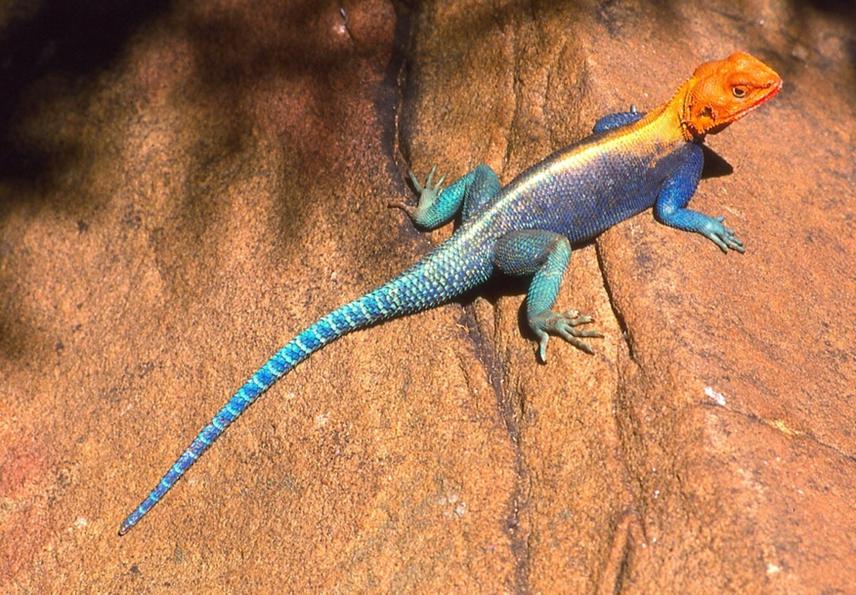Johnson Kiptoo Kiprop
Other projects
9 Jul 2019
Public Engagement: Environmental Education and Biodiversity Conservation through Eco-Clubs in Lake Kamnarok National Reserve, Kerio Valley-Kenya
Project aims to:
-Undertake Nile crocodile surveys, assess their habitats and adopt measures to restore or conserve the remaining Nile crocodile habitats and ecosystems in Kerio Valley.
-Undertake reptile surveys to improve understanding of their ranges and distributions and to provide actual local results and information that will be the basis for advice to the local communities and relevant stakeholders for future reptile development plans.
-Conduct awareness at local primary schools about the significance of reptiles in the ecosystem, counteract negative beliefs that exist on reptiles.

Agama (agama) lionotus, among the target species in the project for conservation education. © Kenya Reptile Atlas.
Lake Kamnarok is the only oxbow lake in Kenya and once provided a habitat for over 20,000 Nile crocodiles (Crocodylus niloticus). However, persistent, systematic, non-random disturbance by humans has pushed the lake to the extent of its resilient threshold; it is rapidly drying and it’s almost consigned to the dustbin of history. Many crocodiles have sought home along the Kerio River; some ended up in community dams creating conflicts with costs to local communities. In this project, I propose to undertake Nile crocodile surveys to monitor their abundance and distribution. The Nile crocodiles are sensitive to hydrology and system productivity and therefore I aim to use the Nile crocodiles as a suite of “ecological indicators” to aid in assessing Kerio River riparian ecosystem; decide on which ecosystems to put more effort in restoration and conservation.
Parallel to this, I plan to artificially propagate 4000 seedlings for eventual restoration at ecosystems assessed and identified for conservation intervention. I also plan to undertake Reptile surveys to improve understanding of their ranges and distributions. To do this; I will select survey areas where reptile species are suspected to occur. Then, using Arc Map version 10.2.1, I will establish 10 Survey Grids with the sampling points chosen randomly. Time Limited Searches (TLS) method will be conducted to search for reptiles in different habitats. X-shaped drift fence will be set up with pitfall traps with segments of 5 m length. The pitfall traps will consist of 10 plastic buckets flush with the ground. In total, every trap array will have five buckets. Rocks lifted or flipped over during searches will be replaced in their original position to minimize disturbance to habitat.
Finally, I aim to undertake conservation education-the next generation to reverse threats facing reptiles which are viewed and perceived negatively and result in direct and indiscriminate killings whenever they are sighted. These threats to reptile species remain shrouded with negative perception and misinformation leading to constant disturbance, persecution and invariably the destruction or fragmentation of their habitats. The awareness talks at local primary schools will improve public understanding for the conservation of reptiles, provide biological and ecological information on reptiles, counteract negative beliefs, minimize or reverse threats facing reptiles and their habitats, address emerging reptile conservation challenges in the Kerio Valley. In the lifespan of this project; aim is for the next generation to understand sustainability, conservation issues and the importance of reptiles in the ecosystem; to be conscious of the challenges these reptiles face.